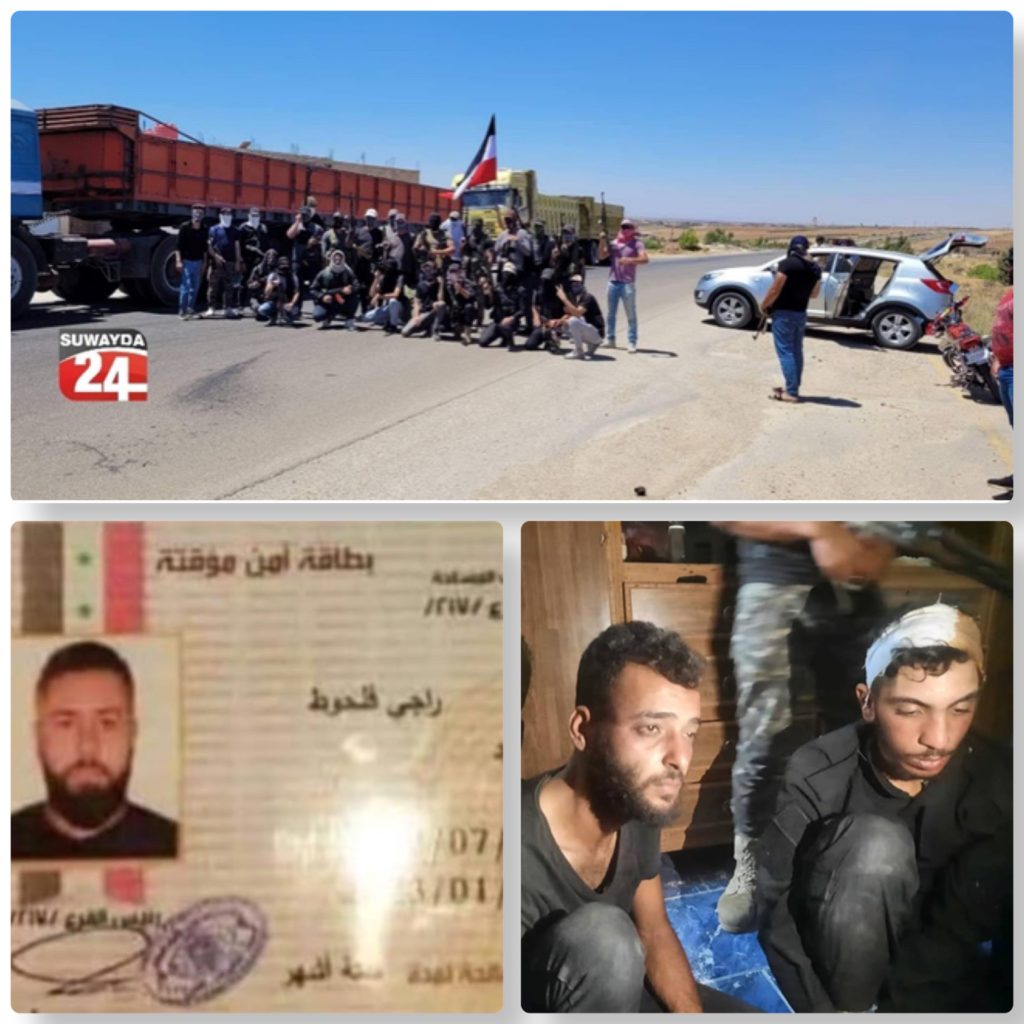On July 26, heavy fighting took place between two rival militias; the “Rijal al Karama” militia (رجال الكرامة), a local Druze militia composed of local residents of Sweida, and towns in the area under the command of Sheikh Yahya al-Hajar, and another local militia under the command of Raji Falhous (راجي فلحوص), supported by the Syrian regime through the Syrian intelligence establishment.
The Syrian regime’s support (and most likely the support of the radical Shiite axis led by Iran, especially Lebanese Hezbollah) for the Raji Falhous militia is reflected in military, logistical, and financial support. The Falhous militia deals, among other things, with kidnappings for ransom on the Sweida’-Damascus Road, protection money, extortion, and drug trafficking.
In November 2021 we published about the drug industry in southern Syria led by the radical Shia axis led by Iran:
The current tension began last Sunday, July 24, when two residents of the town of Shahba, located northeast of the city of Sweida, were abducted by members of the Falhous militia. Tensions peaked on July 26. Clashes began with the protest blocking of roads in the area by local civilians and armed anti- regime militiamen, led by members of the Rijal al Karama militia. At the roadblocks, they insisted on hoisting a flag in the colors of the regime’s flag –without the two stars.

A heavy exchange of small arms and RPGs began on the afternoon of July 26. At the height of the day of battle, in the town of Slim, north of Sweida, dozens of members of the Rijal al Karama militia managed to overcome the Falhous men and overrun the building where they and the military intelligence operated. The building was set on fire, and several militia activists were taken prisoner.
July 26. A day of battle in the Sweida area. "Rigal Elkarama" a local Druze militia takes over the headquarters of the "Raji Falahus" militia in the A'til town, northern Sweida. Falahus is supported by Syrian intelligence and the Shia axis.
— Israel-Alma (@Israel_Alma_org) July 27, 2022
More details soon. pic.twitter.com/933Co8A3rN
During their interrogation, the captured Falhous operatives claimed their monthly salary was about half a million Syrian pounds. They also admitted that they had received a regular supply of Cannabis and Captagon pills from their surplus smuggling activities. It is known that at least seventeen people from both sides were killed, while Dozens injured including a child was wounded in the head by Falhous gunfire.

A drug laboratory for the production of captagon pills was discovered in the building.
After the seizure of the headquarters was completed, the Rijal al Karama militia presented Falhous’ Syrian intelligence/ “military security” outfit/branch 217 membership card, which was renewed on July 16. This membership card certifies the connection of Falhous and his militia to the Syrian intelligence.

The Rijal al Karama militia was established during the Syrian civil war by Al-Sheikh Wahid al-Balous (1965-2015) to protect the Druze community and maintain contact with moderate rebel groups, opposing involvement in the fighting, as well as the involvement of Hezbollah and Iran.
Al-Sheikh Wahid al-Balous was killed by an IED in September 2015, most likely by the Syrian regime, with the support of Hezbollah, in light of the power he gained and his desire to create a kind of Druze autonomy. Laith al-Balous, Wahid’s son, established the Sheikh al-Karama forces, which separated from Rijal al Karama after Laith was ousted from the movement founded by his father.

The protests in Sweida began in mid-2020. A significant deterioration began in the quality of life and living conditions in light of the dire economic situation, the fall in the lira’s exchange rate, the high unemployment rate, and severe fires in agricultural areas that the Syrian regime did not help extinguish, and the rise in prices. Most of the demonstrators came from the middle and lower classes, students and young people at the beginning of their lives.
Initially, the demonstrations were purely socio-economic, calling to live in dignity. But later in the protests, slogans against the regime and even calls for its overthrow began. This is in light of the abduction of civilians by regime-supported militias supported by the radical Shiite axis for ransom, robbery, and theft. The demonstrations were not only in the city of Suwayda but in the entire province, with allegations against the regime and its intelligence organizations, claiming that they were inciting sides against each other.
The day of battle on July 26 may seem like a one-time outbreak, but the truth is different. This is a long process that dates back to the days of the civil war in Syria. Jabal al-Druze is boiling under the surface. On the one hand, there is an agreement to accept the authority of the central Syrian regime, but at the same time, the Druze population insists on protecting the community, its dignity, and its demands:
“Do not disturb our lives, and we will not rise against you”…






